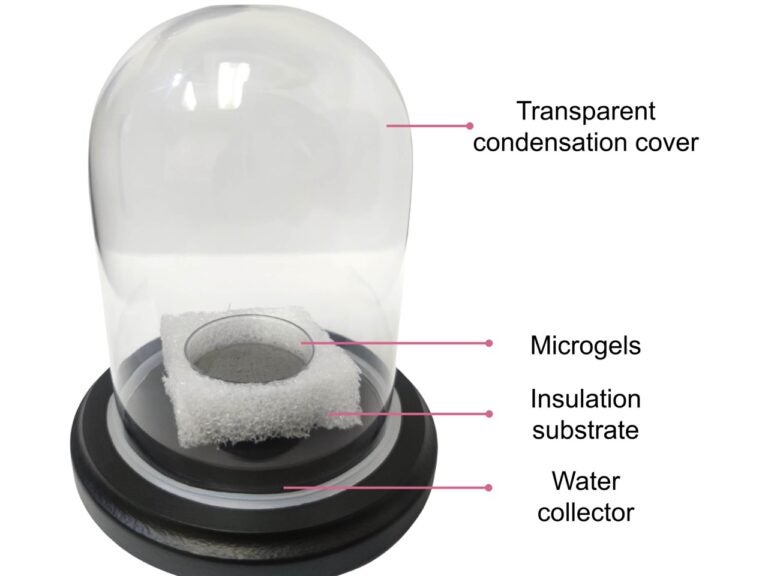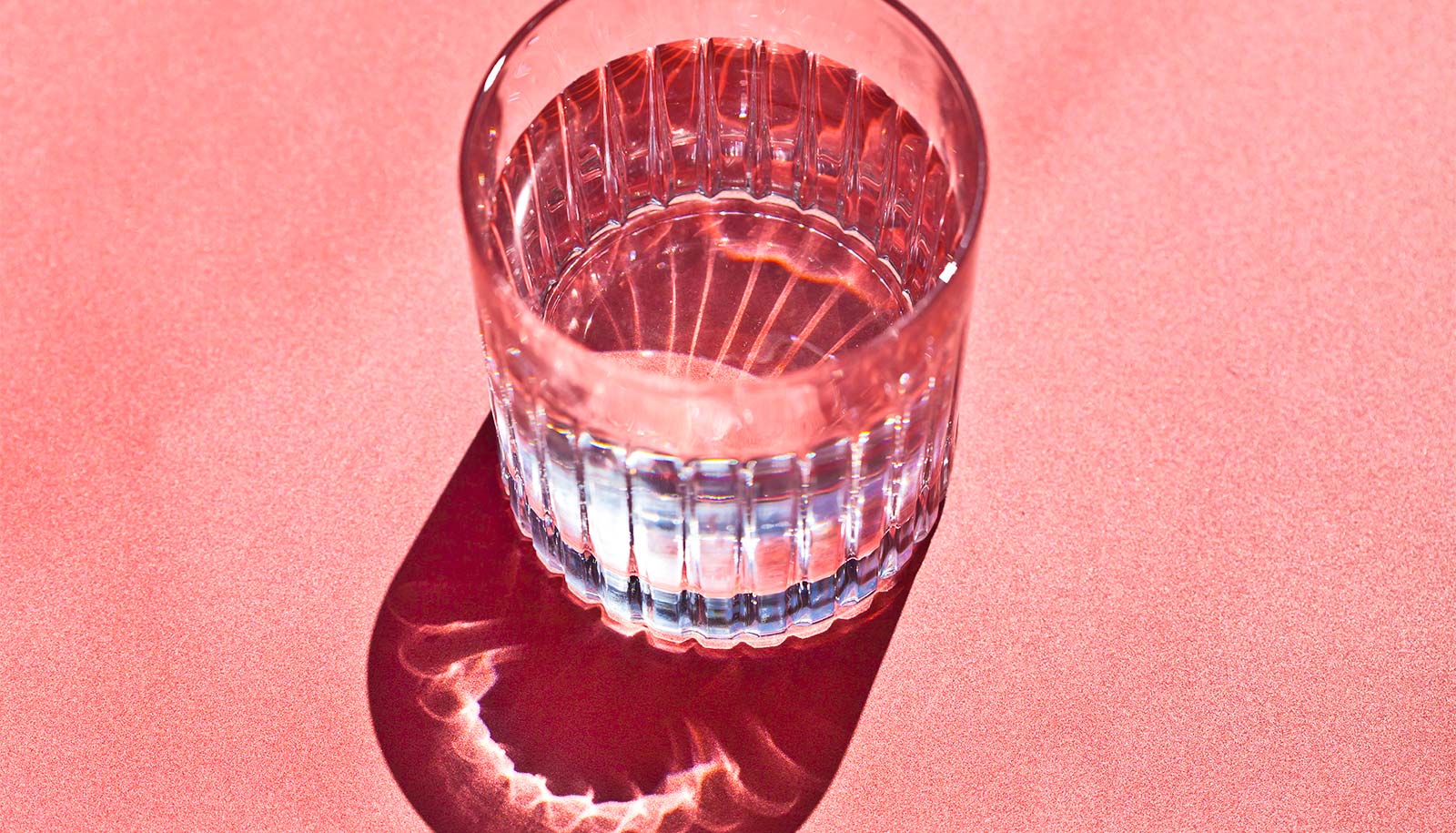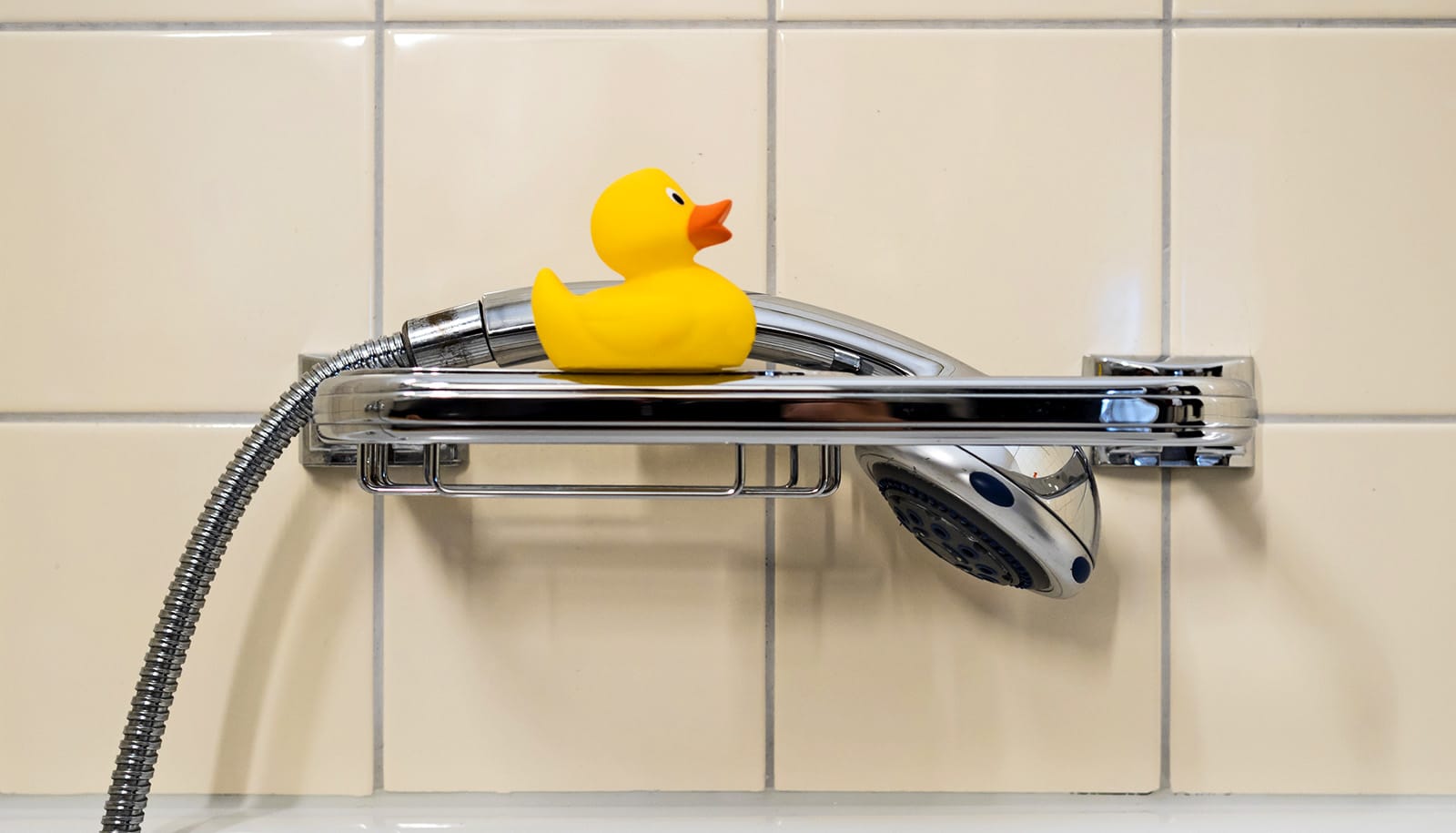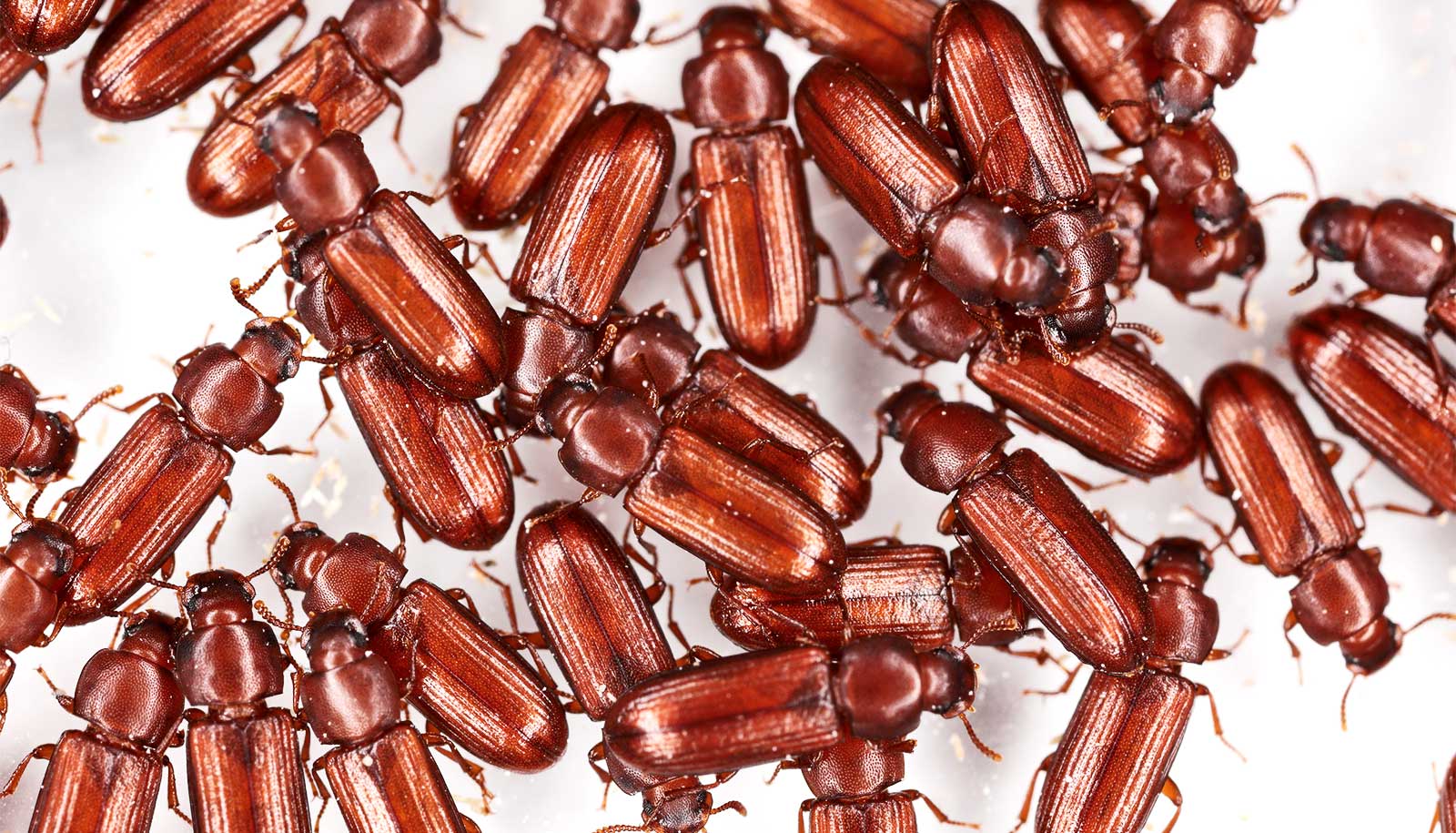A new molecularly engineered hydrogel that can create clean water using just the energy from sunlight.
The researchers were able to pull water out of the atmosphere and make it drinkable using solar energy, in conditions as low as 104 degrees, aligning with summer weather in Texas and other parts of the world.
That means people in places with excess heat and minimal access to clean water could someday simply place a device outside, and it would make water for them, with no additional effort necessary.
“With our new hydrogel, we’re not just pulling water out of thin air. We’re doing it extremely fast and without consuming too much energy,” says Guihua Yu, a materials science and engineering professor in the Cockrell School of Engineering’s Walker Department of Mechanical Engineering and Texas Materials Institute at the University of Texas at Austin.

“What’s really fascinating about our hydrogel is how it releases water. Think about a hot Texas summer—we could just use our temperatures’ natural ups and downs, no need to crank up any heaters.”
The device can produce between 3.5 and 7 kilograms (about 7.7 lbs to 15.4 lbs) of water per kilogram of gel materials, depending on humidity conditions.
A significant feature of this research is the hydrogel’s adaptability into microparticles called “microgels.” These microgels unlock the speed and efficiency improvements that bring this device much closer to reality.
“By transforming the hydrogel into micro-sized particles, we can make the water capture and release ultrafast,” says Weixin Guan, a graduate student in Yu’s lab and one of the lead authors of the study, published in the Proceedings of the National Academy of Sciences.
“This offers a new, highly efficient type of sorbents that can significantly enhance the water production by multiple daily cycling.”
The researchers are pursuing additional improvements to the technology, with an eye toward transforming it into a commercial product. One focus area is optimizing the engineering of the microgels to further improve efficiency.
Scaling up is an important next step. The researchers aim to translate their work into tangible and scalable solutions that can be used worldwide as a low-cost, portable method of creating clean drinking water. This could be life-changing for countries such as Ethiopia, where almost 60% of the population lacks basic access to clean water.
“We developed this device with the ultimate goal to be available to people around the world who need quick and consistent access to clean, drinkable water, particularly in those arid areas,” says Yaxuan Zhao, a graduate student in Yu’s lab.
The team is working on other versions of the device made from organic materials, which would reduce costs for mass production. This transition to more commercially viable designs comes with its own challenges in scaling production of the sorbent that allows moisture absorption and in maintaining durability for the product’s lifespan. Research is also focused on making the devices portable for various application scenarios.
The Norman Hackerman Award in Chemical Research from the Welch Foundation and the Camille Dreyfus Teacher-Scholar Award funded the work.
Source: UT Austin



